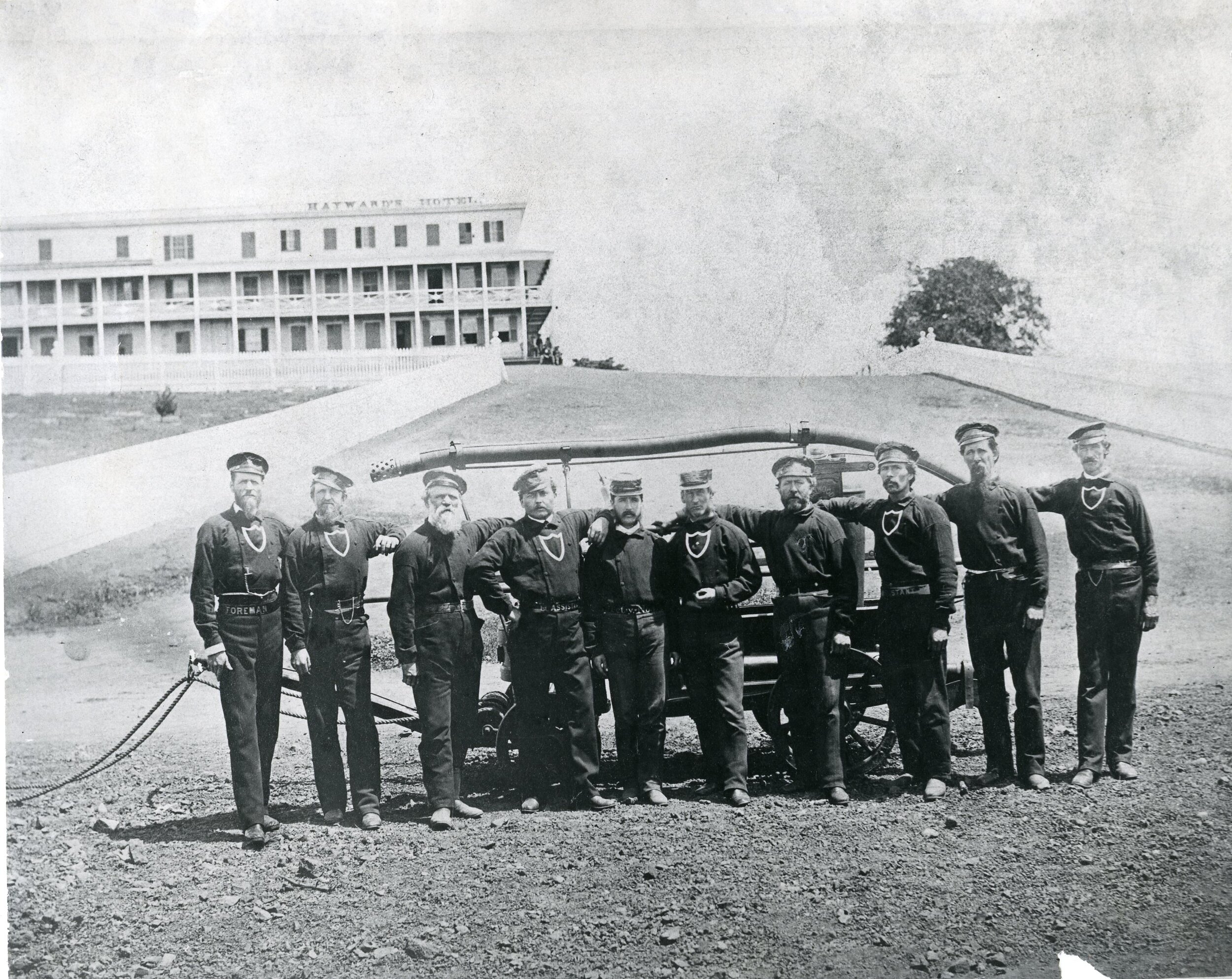William Hayward
Written by HAHS Staff | Download a PDF of this article
Have you ever wondered where the name “Hayward” comes from? The answer to that question goes back more than a hundred years ago, and starts with the story of a man.
William Dutton Hayward was born in 1815, on his family’s farm in Hopkington, Massachusetts. When he grew up, he moved to the city of Georgetown to work in a shoe factory. In 1838, he married a woman named Lois Bartlett. Only 2 years later, in 1840, Lois died, leaving William alone to raise his baby daughter, Sarah Louise.
In 1848, gold was discovered in California. Like thousands of other people, William decided to head west to seek his fortune in the gold fields.
In 1849, William left his daughter Sarah Louise in the care of family members and boarded a steamship called The Unicorn. At that time, the trip to California took six months by ship. He had to travel down along the entire east coast of the United States and South America, then around Cape Horn, then back up the entire Pacific Coast to California. He arrived in San Francisco in late 1849, and headed out to look for gold.
Mining for gold was hard work, and most miners never made much money at all. This was true for William Hayward. After many months of working in the gold fields, William decided he’d had enough. He started the journey back to San Francisco.
On William’s trip back to San Francisco he pitched his tent one night close to the mouth of Palomares Canyon. The land looked beautiful to him. In a later interview, William said, “I thought if I could get a little land in this paradise, I would be satisfied.”
Take a moment to imagine what that area would have looked like at that time. Rolling green hills and valleys, plenty of water from clear-flowing streams, a mild climate, maybe deer and some rabbits roaming about. No highways. No houses. No fences or light posts. Maybe just a faint horse trail showing signs that someone traveled through the area. As far as he knew, the land was wide open and available for anyone to take.
But it wasn’t available. In fact, that piece of land William so admired was still a part of Mexico. It was part of the huge ranch owned by Don Guillermo Castro. The land had been given to Castro by the Mexican governor in 1841.
Hayward Volunteer Fire Department, c. 1876. William Hayward is the third man from the left.
The story goes that two of Castro’s men came upon William and his tent and reported back to Castro that someone was squatting on his land. Squatting means to stay on someone else’s property without paying for it.
William Hayward and Guillermo Castro met to talk it over. Some stories say that William offered right away to pay for the land. Others say that Castro offered William a job making shoes for his workers on the rancho. The real story remains a mystery. But they must have worked it out, because not too long after meeting, William bought 40 acres of land from Castro, close to where Castro’s own hacienda was located. A hacienda is a large house and the surrounding lands, often including gardens, fields, and land for raising cattle. Castro’s hacienda was located on the corner of C St and Mission Boulevard, where historic Hayward City Hall still stands today.
William Hayward set up a general store on the land he bought from Castro, on the corner of A St. and Mission Boulevard. Mission Boulevard was a busy road, even in those days, and William wanted all those busy travelers to stop and buy things in his store and restaurant. Hayward noticed that the travelers stopping by needed a place to stay the night, and so he had the idea to start a hotel.
By 1852 Hayward started building his hotel. The stagecoach service from Oakland to San Jose would stop at the hotel to change horses. The passengers would stop, stretch their legs, eat and drink at the restaurant, and sometimes stay for the night. More and more people began settling in the area. In 1850, California became a state in the United States. Eventually, Castro was forced to sell all of his land and move away.
William Hayward knew how to make things work to his advantage. People needed a way to get their mail in the new settlement, and Hayward’s hotel was in the center of town. William Hayward got the US Postal Service to start a new post office right in the lobby of his hotel.
In fact, William was involved in almost every aspect of the early days of the town. He served as the first “Roadmaster” of the area, and made sure that the main roads went right by his hotel. He was a County Supervisor in 1856 and 1869, and he helped to start Lone Tree Cemetery. He was also one of Hayward’s first firefighters.
In all of this, William had the help and support of his wife Rachel. William married Rachel Rhodes Bedford, a widow with a daughter of her own, in 1866. Hayward’s daughter, Sara Louise, came out from Massachusetts to live with them. In 1867, William and Rachel had a son, their only child, William M. Hayward, known as “Willie.” Rachel played a major role in running the hotel and helped it become known as a great place to stay, with good food and a warm atmosphere. Since Rachel was running the hotel, that left William more time for all of his other activities.
William Hayward lived to be an old man, known and respected by the entire town. He died on July 9, 1891, at the age of 76. His funeral was held at the Congregational Church, now called Eden UCC. The funeral parade from the church to Lone Tree Cemetery was 2 miles long. All the shops and businesses in town were closed that afternoon and flags flew at half-mast in his honor. He was buried in a grave that overlooked the town that he helped build.




